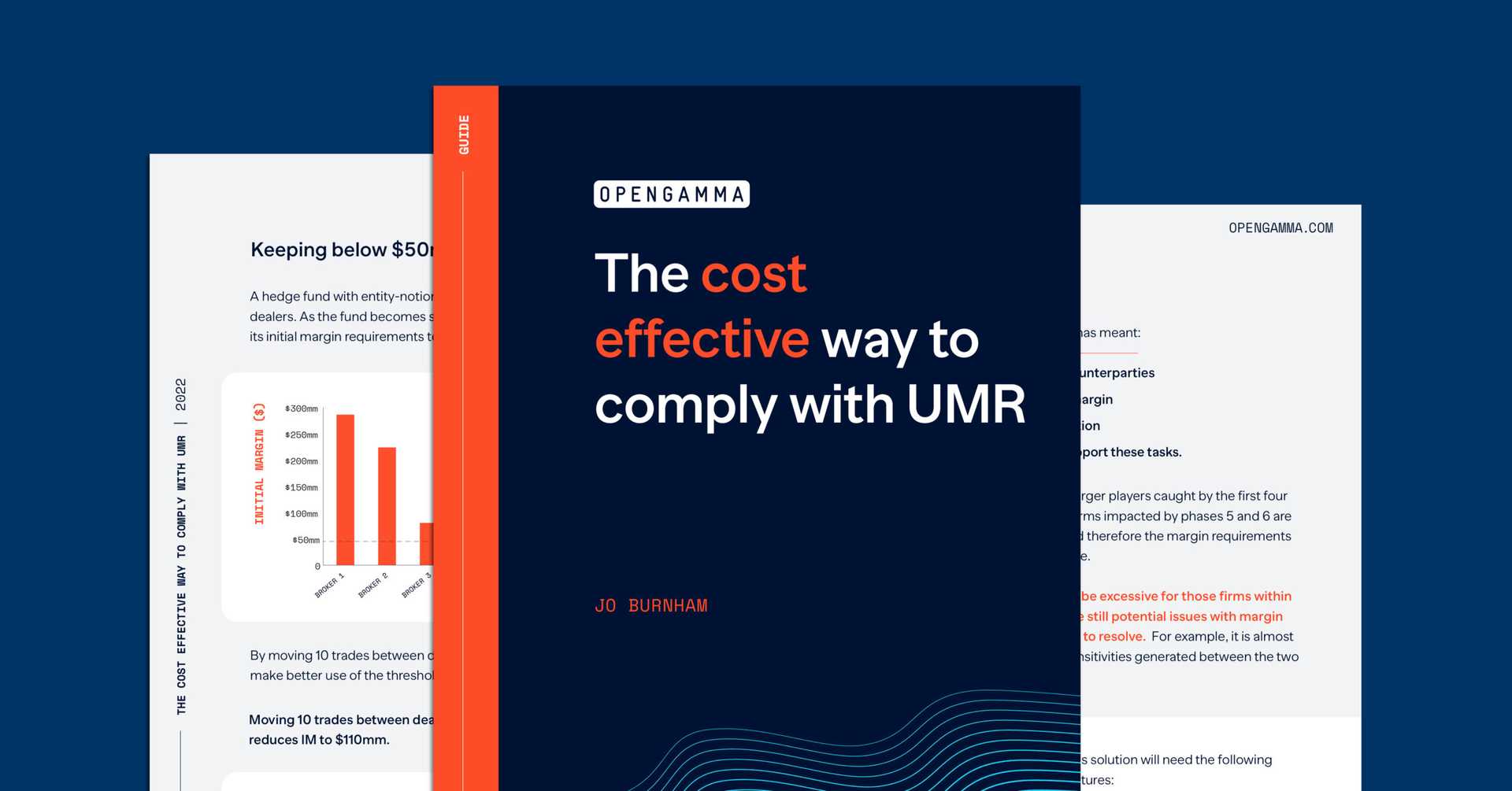Why Clear?
Clearing offers pension funds and asset managers multiple benefits, including:
Reducing Credit Risk
Clearing reduces credit risk by removing direct exposure to each counterparty, and replaces this with exposure to a central clearing house where the credit risk is lower.
Standardising Pricing
Clearing standardises prices between dealers in the market by the use of standardised collateral agreements. Pricing has historically been inconsistent for bilateral trades due to different collateral postings and therefore different discount curves. In the clearing world, using the same currency as the underlying of the discount curve has helped make pricing consistent.
Increasing Liquidity and Netting
Clearing helps clients get tighter spreads both on incoming and – most importantly – exiting trades. This is because it removes lock-in to any individual counterparty by making it possible to close out trades with any counterparty.
Lowering Margin Requirements
Pre-empting the bilateral initial margin rules, clearing rules offer lower margin requirements compared to bilateral rules, putting less of a strain on the resources at a manager’s disposal.
Why Delay Clearing?
Firms hold off from clearing to:
Avoid the Need To Post Initial Margin
Highly rated pension funds currently trade without having to post any initial margin under bilateral CSA’s, where as under clearing they would be obliged to post initial margin.
Avoid the Direct Costs Of Clearing
Clearing attracts transaction fees and initial margin spreads. When the bid- offer spreads on bilateral vs cleared trades are the same, clearing is the more expensive option.
Not Post Variation Margin In Cash
Pension funds don’t hold cash, as this is a drag on their returns. This introduces dependency on the repo markets to create cash to post as margin, and access to those markets cannot be assured in times of market stress.
Lack Access To Clearing Providers
Under post-crisis capital rules, it’s hard for clearing brokers to make returns from pension fund and asset manager customers, limiting the availability of services for these firms.Pension funds typically have low trade turnover (low revenue), and long dated exposures (high capital) which generate low returns for clearing brokers, making them less inclined to work with them.
Uncleared Margin Rules Explained
The Basel Committee on Banking Supervision (BCBS) and the International Organization of Securities Commissions (IOSCO) first introduced the framework for uncleared margin rules (UMR) in September 2013, with the final version appearing in 2015.
This was decided because posting both variation and initial margin significantly reduces the credit exposure between counterparties in a default scenario. The enforcement – similar to clearing – has been phased in with the last counterparties subject to these rules by September 2020.Within uncleared margin rules, initial margin can be calculated using a schedule based approach, or by using initial margin models.
While the parties must agree on the method used to determine the initial margin that must be posted, there is no requirement for counterparties to use a common methodology. However, in practice, it is expected that all firms will use the ISDA ‘Standard Initial Margin Model (SIMM) TM’ – a methodology that can be licensed from ISDA to calculate initial margin.
Rules for uncleared margin are progressively being introduced, with the final date for full compliance being September 2020. And no exemption to this regulation is likely. So, all pension funds and asset managers will ultimately need to post both initial and variation margin by autumn 2020 – a date which is rapidly approaching.
Whether it is the introduction of the clearing obligation or the requirement to post initial margin on bilateral trades, new costs need to be understood and tools put in place to determine the optimal approach to trading under these new rules.
So, all pension funds and asset managers need to act now in order to be on the right side of regulators and remain competitive.
Taxiarchos228. (Photographer). September 16th, 2014.




